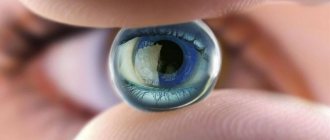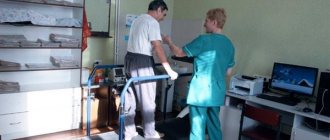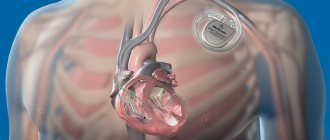Why general anesthesia is dangerous - myths about anesthesia
Over the past decades, general anesthesia has become much “softer”: the introduction of drugs with fewer side effects, a significant reduction in the use of narcotic drugs, the development and active use of a new generation of gas mixtures that enter the lungs through a ventilator and support a person in medicated sleep as much as necessary, all this has led to the fact that modern anesthesia has become practically safe. Proof of this is the fact that these days there is practically no question about the duration of anesthesia. If in the 70s, hours were counted, and the longer a person was in medicated sleep, the worse he “moved away from it,” but now serious operations last for 10–12 hours, and the next day the patient is transferred to a ward, which called “with a clear head.”
Another brick in the safety wall is the active introduction of imaging techniques in anesthesiology. If previously a doctor punctured large vessels and installed catheters in them blindly, based only on anatomical landmarks and his own experience, today everything happens under ultrasound control, the risk of error and the development of complications tends to zero.
The equipment controls the depth of anesthesia, automatically changes breathing parameters, selecting optimal criteria for each specific moment of the operation. The workplace of an anesthesiologist is difficult to distinguish from the cockpit of an airliner.
As you know, in the past, the liver and brain suffered the most from serious anesthetic drugs. Therefore, special attention is paid to neuro- and hepatoprotection. Modern drugs have minimal hepatotoxicity and virtually no damage to the liver, neurotoxicity is also significantly reduced, and special drug regimens are used to protect the brain. And it works, because stories about memory loss or deterioration of brain activity after anesthesia are becoming less and less common.
Discussion
The two clinical observations presented differ significantly from each other in terms of the main clinical diagnosis and outcome.
But they also have certain common features, which allows us to come to the following conclusions after analyzing these clinical cases. 1. Both patients are young people without any severe chronic cardiac pathology. True, in the first of them, before the operation, difficult-to-explain changes were revealed on the ECG, and on the section, Echinococcus bullae were found in the heart and cicatricial changes of unknown origin, but this could hardly have caused sudden asystole, resistant to resuscitation measures.
2. In both patients, the intracranial process led to the development of intracranial hypertension syndrome, in the second patient - to severe occlusive hydrocephalus. In both cases, clinical signs of intracranial hypertension were the main manifestation of the disease and were characterized by rapid development. This can probably explain the absence of congestive optic discs.
3. Clinical symptoms in both patients indicated extreme severity of intracranial hypertension. Moreover, both patients, against the background of clear consciousness on the eve of the operation, developed clinical symptoms of occlusal crisis in the form of an attack of severe headache, nausea, vomiting and limitation of upward gaze. For both patients, the teams of doctors on duty discussed the need to install an external ventricular drainage, but due to the effect of dehydration therapy and the absence of vital disturbances, it was decided to refrain from the manipulation.
The main question arises: what happened to our patients at the stage of induction of anesthesia and tracheal intubation, which resulted in sudden asystole against the background of an initially intact cardiovascular system and, in fact, at the pre-surgical stage of the operation?
Analysis of literature data shows that the development of sudden asystole in any person can be a consequence of a number of problems, among which cardiological ones are the undisputed leaders [1]. In patients with neurosurgical pathology, asystole can also be caused by a number of different reasons, but they are significantly different from those that cause sudden asystole in patients without cerebral pathology. This can manifest as acute subarachnoid hemorrhage (SAH) from a cerebral aneurysm [2]. Moreover, aneurysmal SAH is now recognized as the most common neurological cause of asystole. However, our patients suffered from a different neurosurgical pathology.
The phenomenon of sudden unexpected death in epilepsy (SUDEP) has been described in patients with epilepsy, which explains the more than 20-fold increased risk of sudden death in epileptics compared to the general population [3]. The leading causes of sudden death in these patients are recognized as respiratory depression caused by seizures, cardiac arrhythmias, cerebral depression and autonomic dysfunction. But our patients did not suffer from epilepsy.
Dislocation of the brain and its herniation (into Bichat's fissure, into the foramen magnum) against the background of a space-occupying brain formation can manifest as asystole. Such situations occur after lumbar puncture, which forms a caudally directed dislocation gradient against the background of even a slight loss of cerebrospinal fluid [4–6]. Dislocation leading to asystole is also possible in the cranial direction due to rapid drainage of the ventricular cerebrospinal fluid, as was described in the observation of C. Bahl and S. Wadwa [7], in which resuscitation measures were ineffective until the dislocation gradient was eliminated by intraventricular administration of saline. Perhaps this is the situation closest to ours, although with certain limitations. It is discussed in more detail at the end of the discussion.
During anesthesia and surgery, patients with neurosurgical pathology may have their own specific reasons for the development of asystole. One of the most common causes of asystole at the beginning of surgery in neurosurgical patients with paretic limbs is the use of depolarizing muscle relaxants such as suxamethonium [8–10]. When analyzing a large number of similar observations, their cause was established: the introduction of a depolarizing muscle relaxant causes asynchronous contractions of striated muscles - the so-called muscle fasciculations, which leads to the release of potassium from the myofibrils, which is especially rich in paretic muscles. The acute entry of such an amount of potassium into the bloodstream creates conditions for “hyperkalemic” asystole. Moreover, in this situation, the gradient of the increase in potassium in the blood plasma is most important, and not its absolute values in the blood, which may be normal. Currently, this situation is clinically “voiced”, schemes for overcoming it have been developed (risk groups for this complication, preliminary administration of a depressive subapnoic dose of non-depolarizing muscle relaxants, or refusal to use them altogether), and now it no longer represents a serious clinical problem.
Perhaps the most studied situation associated with intraoperative asystole in neurosurgical patients (after a situation of massive surgical blood loss) can be considered the trigeminocardiac reflex during interventions on the structures of the posterior cranial fossa (PCF) [11-13]. However, its development has been described during transnasal neurosurgical interventions on the pituitary gland [14, 15] and during various types of craniomaxilofacial interventions [16]. The situation of the trigeminocardiac reflex is characterized by the sudden development of progressive bradycardia, up to asystole, against the background of surgical manipulations near the trigeminal nerve or its branches. Immediate cessation of surgical procedures and intravenous administration of anticholinergic drugs are very effective, and resuscitation measures are usually not required.
Venous air embolism (VAE) is another common possible factor in the development of intraoperative asystole in neurosurgery. The classic situation for the development of TLE is neurosurgical interventions on the structures of the PCN or occipital lobes of the brain, performed with the patient in a sitting position [17-20], although there are a series of publications in the literature that describe the development of massive and even fatal TLE during spinal neurosurgical interventions performed in the sitting position. lying down [21-23]. Indeed, acute massive VVE can lead to asystole, but for its development it is necessary to damage large venous collectors with rigid walls that prevent them from collapsing under negative pressure in them (such as the sinuses of the brain), and the presence of a pressure gradient leading to the suction of air into the venous collector , which does not coincide with our situation.
Reflex asystole associated with a direct effect on the vagus nerve has been described with carotid endarterectomy, facial nerve repair, and some other neck interventions. Severe bradycardia, up to asystole, is a described complication of angioplasty and stenting of the carotid arteries [24–28], and this is also possible during functional neurosurgical interventions [29]. Finally, at the stage of completion of neurosurgical intervention, asystole may develop, the cause of which may be the syndrome of excessive subgaleal drainage [30], or the acute formation of an intracranial hematoma in the area of the surgical wound, leading to compression of the brain stem [31]. All of these are relatively rare, but clinically described situations. However, all of them also have nothing to do with our clinical observations.
Finally, pharmacological drugs administered to the patient during anesthesia and surgery can also, for various reasons, lead to or contribute to the development of asystole. Narcotic analgesics (primarily full opiate receptor agonists) such as fentanyl, sufentanil, alfentanil and remifentanil can cause bradycardia through the mechanism of central stimulation of the vagus nerve, which is well known [32]. However, this effect in our clinical situation can only be considered as contributing. Another group of drugs that are dangerous in relation to asystole during surgery are central α2-agonists (clonidine and dexmeditomedine). Regarding the latter drug, there are quite alarming publications [33, 34]. Finally, we came across a report in the literature about intraoperative asystole after the administration of the cytostatic adriamycin during surgery [35]. But these drugs, except for narcotic analgesics (fentanyl) in relatively small doses, were not administered to our patients.
None of the above-mentioned causes of asystole described in the literature (possibly with the exception of dislocation and herniation) clarifies anything in our clinical observations. Therefore, the following explanation seems most likely to us. It is known that tracheal intubation is accompanied by a characteristic hemodynamic reaction of varying severity, the so-called pressor reaction (PR), which also occurs with an increase in intracranial pressure [36]. It is also known that severe PR poses a real threat for patients with severe heart failure (risk of sudden decompensation) and with cerebral arterial aneurysms (risk of aneurysm rupture) [37]. Apparently, this list should be expanded to include neurosurgical patients with severe intracranial hypertension at the stage of subcompensation-decompensation.
Even a slight increase in volumetric cerebral blood flow against the background of an increase in systemic blood pressure within the framework of PR, apparently, can cause the minimum necessary increase in ICP for the development of decompensation of the intracranial system and triggering mechanisms of dislocation of brain structures. This is evidenced by the results of the section of the first patient. In addition, it is possible that in our observations, stimulation of the vagus nerve played a certain role in the development of asystole. Its factors could be the use of fentanyl, which causes bradycardia, as part of induction and the non-use of anticholinergics as part of premedication. Despite the fact that in both observations the anesthesiologist took the necessary measures to block the PR (an adequate dose of propofol, narcotic analgesic and lidocaine for induction of anesthesia), and the tracheal intubation itself was quick and non-traumatic, apparently, the intracranial situation was already so critical that even a slight increase Blood pressure and cerebral blood flow caused her decompensation.
Interestingly, in one of the most numerous published series of observations of asystole in patients with neurosurgical pathology, including 22 observations (!), in 5 patients asystole developed at the stage of induction of anesthesia and the start of surgery, and in their recommendations the authors write that “ ... in the resuscitation of a neurosurgical patient, timely implementation of measures to reduce intracranial pressure and prevent edema and swelling of the brain is of particular importance” [38].
It is possible that in patients with severe occlusive symptoms, it is still advisable to pre-install an external ventricular drainage even before the start of anesthesia, especially after an occlusive attack suffered immediately before the operation, albeit successfully treated with medications.
Epidural anesthesia
Many operations take place while the patient is conscious. For example, operations on the lower extremities, genitals, hernias, and many others. Mainly due to the use of various types of spinal anesthesia, mainly epidural block. In this case, for pain relief you will need several milliliters of the drug, which are injected into the epidural space running along the spinal column. But for several hours, the absence of sensitivity below the level of the catheter is guaranteed.
Childbirth is increasingly taking place under epidural anesthesia. But we must remember that it is not recommended in cases of weak labor, when contractions, on the contrary, have to be stimulated. As for the situation when childbirth proceeds normally, data from many years of research indicate that epidural anesthesia during childbirth is safe and effective.
Today, many people prefer to undergo unpleasant examinations under general anesthesia - gastro- and colonoscopy, various biopsies and punctures. This is really a solution for those who are very afraid of even a little pain and do not want to experience painful minutes. The main thing is that the procedure is carried out under the supervision of an anesthesiologist, who accurately calculates the dosage of the drug and turns off consciousness to the minute. He monitors the patient's breathing and, if necessary, adds a little medicine. If these rules are strictly followed, studies under intravenous general anesthesia are absolutely safe.
Complications of anesthesia
Therapy is carried out taking into account the reasons that caused the pathological condition. In case of respiratory disorders, the composition and volume of the gas-air mixture is adjusted, and the endotracheal tube is sanitized using an electric suction. If it is not possible to completely clear the airways, call the endoscopic team on duty to perform emergency bronchoscopy. To relieve laryngospasm, narcotic analgesics, atropine, antispasmodics, and adrenergic agonists are used. To saturate the blood with O2, the device is set to enhanced oxygenation mode (100%). Maintaining a sleepy state is ensured by intravenous anesthetics.
Cardiac dysfunction is treated symptomatically. For bradycardia, administration of atropine and adrenaline is required. A decrease in blood pressure against the background of weakened cardiac activity is an indication for transferring the patient to the administration of pressor amines through a syringe pump. The dose of anesthetic may need to be reduced. Arrhythmias are stopped using cordarone, amiodarone, procainamide, lidocaine. Fibrillation that is not amenable to chemical treatment requires electrical defibrillation. When blood pressure increases, antihypertensive drugs are administered; when blood pressure decreases, hypotonic drugs, infusion solutions to replenish blood volume, and steroid hormones are administered.
Short-term postoperative psychosis cannot be relieved with medications. In case of severe psychomotor agitation, the prescription of neuroleptics and narcotic analgesics is allowed. Long-term disorders of the central nervous system require therapy with the use of nootropics, antioxidants, and general strengthening agents (multivitamin complexes, adaptogens). Intestinal tone usually recovers on its own within 1-2 days. In case of prolonged paresis, proserin is administered.
Malignant hyperthermia is an indication for the administration of datrolene, a muscle relaxant that can block ryanodine receptors. In addition, symptomatic treatment drugs and physical methods of reducing the temperature are prescribed (ice on large vessels, wetting the sheets and the patient’s body with cold water, ventilating the patient’s body). For allergic reactions, antihistamines, glucocorticosteroids, and symptomatic medications are infused. Severe manifestations require mandatory tracheal intubation and transfer to mechanical ventilation, if this has not been done previously.
Anesthesia in dentistry
And one more question that interests many: is it worth agreeing to general anesthesia when installing dental implants? In fact, in this case there is no choice. After all, if we are talking about installing 1-2 implants, you can really get by with local anesthesia, but when a dentist does half of the jaw at a time, then working without anesthesia will turn into real torture for both the doctor and the patient. Considering these facts and the safety of modern anesthesiology, most patients agree with the doctor’s proposal and prefer to wake up with a finished result.
Why is general anesthesia recommended?
Many years of clinical experience are aimed at achieving maximum comfort and safety of procedures. We use the latest anesthesia technologies and drugs that were developed and used not only for cosmetic surgery. They are designed for a smooth course of anesthesia and quick awakening. During this restful sleep you will feel absolutely nothing. This will allow the doctor to be completely focused on the operation. For surgeries lasting more than an hour, our anesthesia requires fewer medications. It is also characterized by rapid awakening and absence of nausea.
Why is anesthesia needed?
It would seem that anesthesia is needed for pain relief. However, that's not all. Anesthesia allows not only to relieve a person from unpleasant sensations, but to control his condition during surgery. The fact is that the human body reacts to any such intervention very actively - with heartbeat, increased heart rate, changes in pressure, which is completely undesirable during surgery. Anesthesia blocks such reactions of the body and during the operation a normal heartbeat and a calm state are maintained. In addition, thanks to anesthesia, the person does not seem to remember about the operation. Anesthesia relieves the patient of serious stress. When the patient does not remember either pain or fear, rehabilitation proceeds faster.
After general anesthesia
Even after a good general anesthesia, in the first hours there is short-term confusion, disorientation in space and time, drowsiness, nausea, and dizziness. As the anesthetic drugs wear off, pain appears in the postoperative wound, but it is successfully relieved by the administration of strong anesthetics.
After general anesthesia with an endotracheal tube, patients complain of pain and sore throat caused by irritation of the mucous membrane of the upper respiratory tract, but this symptom, like nausea, passes very quickly. As a rule, patients feel well 3-4 hours after surgery, and on the second day they leave the clinic and return home.











